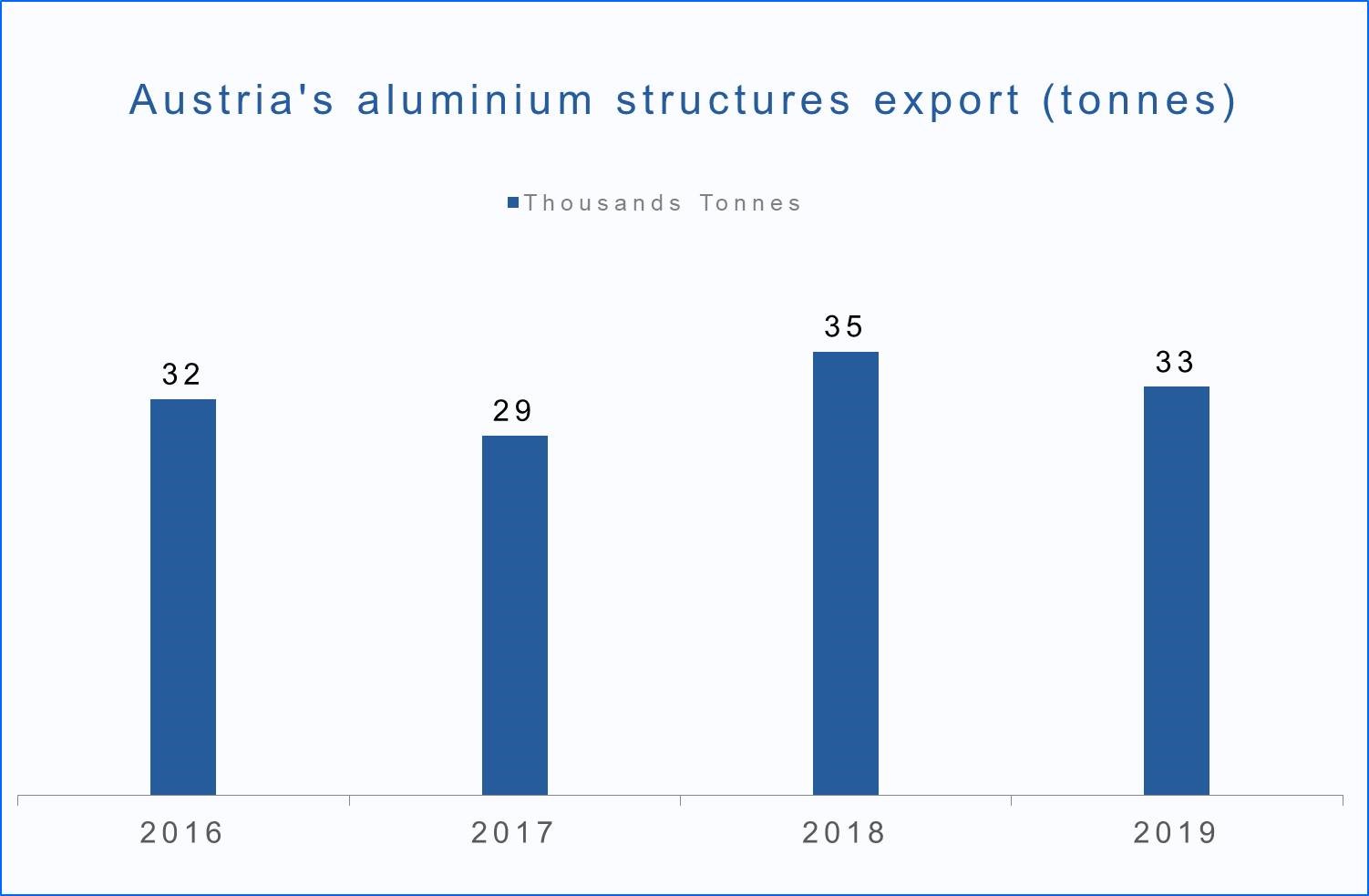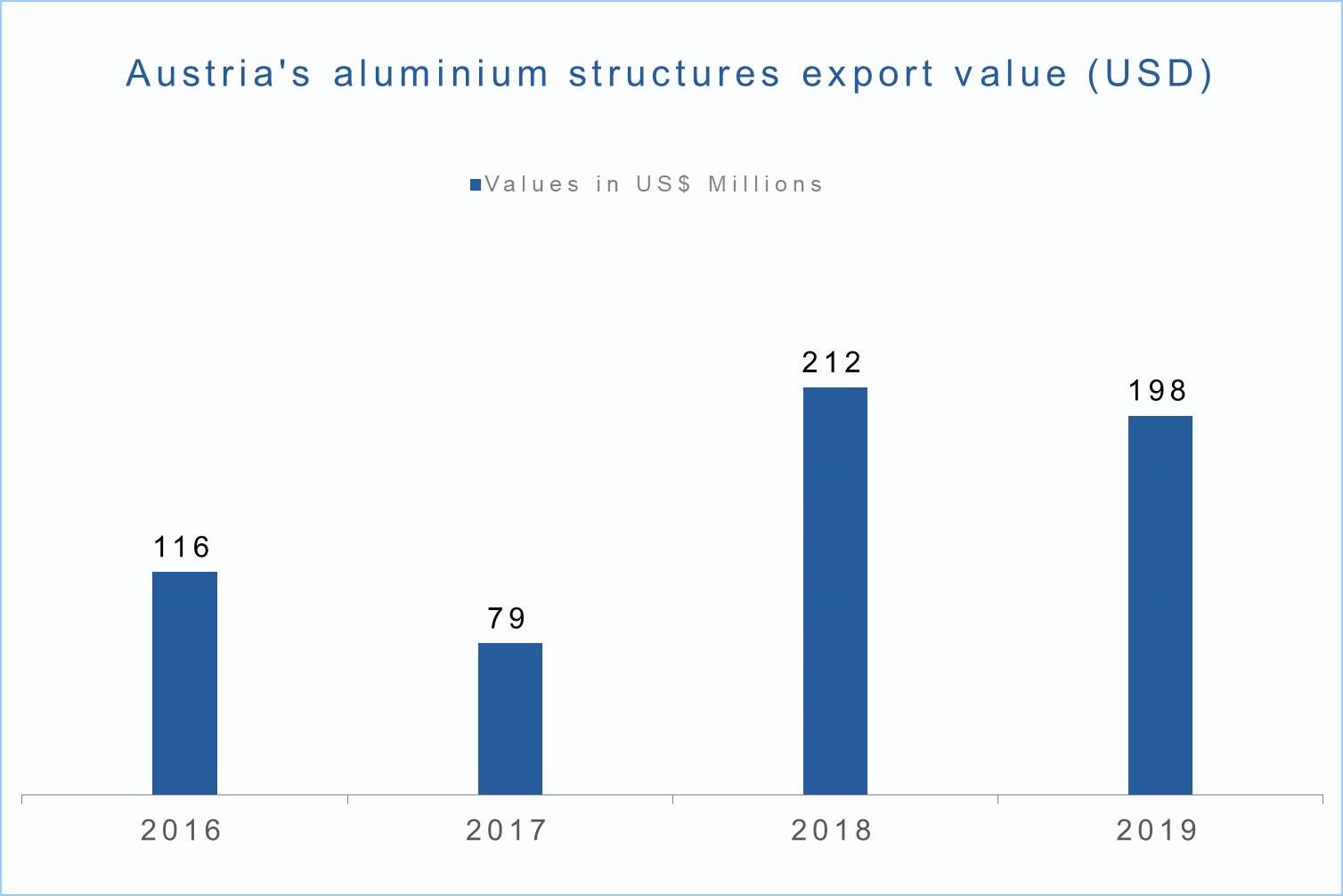

Until the early 20th century, aluminium was generally not used in construction. It was in the 1920s when aluminium began to be used for decorative detailing and then in the 1930s, a breakthrough was achieved when the Empire State building in New York used aluminium for much of its interior structures. Subsequently, the non-ferrous metal began to be used for roofing, flashing, wall panels, spandrels, and so on.
With this growing use, the exports of aluminium structures by several countries have also been increasing. They are used for commercial buildings to domestic dwellings. In the year last, Austria’s exports of aluminium structures had increased by 23 per cent from 28,673 tonnes in 2017 to 35,385 tonnes. However, the amount of export in 2017 was down 9 per cent from 31,580 tonnes in 2016. Even this year, the amount is likely to stand low year-on-year at 32,558 tonnes, down 8 per cent, according to our third-party data.
{alcircleadd}
Austria’s aluminium structures export value is also estimated to drop this year, in tandem with the lowered export volume. According to the data, the value is likely to stand at US$198 million, compared with US$212 million in 2018. In 2017, Austria’s aluminium structures export value was at US$79 million, which means the value in 2018 had sharply increased by 168 per cent. Even the export value in 2016 was higher than in 2017 at US$116 million.

The above data shows that Austria’s aluminium structures export, both in term of volume and cost, has been declining in alternative years since 2016.
Germany is where Austria exports the maximum amount of aluminium structures, totalling 17,598 tonnes at US$61 million. Switzerland, Slovakia, and the Czech Republic are the three other countries where Austria ships 2708 tonnes at US$42 million, 2,686 tonnes at US$13 million, and 2014 tonnes at US$11 million.
Responses








